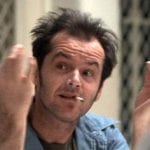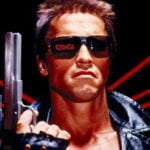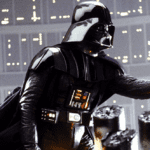 Technology
Technology  Technology
Technology  Humans
Humans 10 Everyday Human Behaviors That Are Actually Survival Instincts
 Animals
Animals 10 Animals That Humiliated and Harmed Historical Leaders
 History
History 10 Most Influential Protests in Modern History
 Creepy
Creepy 10 More Representations of Death from Myth, Legend, and Folktale
 Technology
Technology 10 Scientific Breakthroughs of 2025 That’ll Change Everything
 Our World
Our World 10 Ways Icelandic Culture Makes Other Countries Look Boring
 Misconceptions
Misconceptions 10 Common Misconceptions About the Victorian Era
 Mysteries
Mysteries 10 Strange Unexplained Mysteries of 2025
 Miscellaneous
Miscellaneous 10 of History’s Most Bell-Ringing Finishing Moves
 Technology
Technology Top 10 Everyday Tech Buzzwords That Hide a Darker Past
 Humans
Humans 10 Everyday Human Behaviors That Are Actually Survival Instincts
 Animals
Animals 10 Animals That Humiliated and Harmed Historical Leaders
Who's Behind Listverse?

Jamie Frater
Head Editor
Jamie founded Listverse due to an insatiable desire to share fascinating, obscure, and bizarre facts. He has been a guest speaker on numerous national radio and television stations and is a five time published author.
More About Us History
History 10 Most Influential Protests in Modern History
 Creepy
Creepy 10 More Representations of Death from Myth, Legend, and Folktale
 Technology
Technology 10 Scientific Breakthroughs of 2025 That’ll Change Everything
 Our World
Our World 10 Ways Icelandic Culture Makes Other Countries Look Boring
 Misconceptions
Misconceptions 10 Common Misconceptions About the Victorian Era
 Mysteries
Mysteries 10 Strange Unexplained Mysteries of 2025
 Miscellaneous
Miscellaneous 10 of History’s Most Bell-Ringing Finishing Moves
10 Franchise Movies That Needed a Different Director
Film directors are more than just the people who shout “action” and aim the camera. They have a hand in the visuals, story, script, and acting of every production, bringing all elements together to make something better than the constituent parts—or that’s the idea. Sometimes directors overstep their bounds, misjudge the material, and churn out pictures that don’t live up to their promise. And franchise directors can be the worst of all because they’re at the mercy of the studio, audience expectations, and every previous film.
Whether there was another name attached to the project first, someone waiting in the wings who never got their shot, or a connected talent who could have been put to good use, here are 10 franchise movies that needed a different director.
Related: Top 10 Movies That Destroyed The Studios That Made Them
10 Alien 3
When it came to following up the immensely popular Aliens, 20th Century Fox settled for Vincent Ward directing, having failed to secure Ridley Scott. But Ward was fired from the production of Alien 3 at the eleventh hour because the producers couldn’t control him. Thus, they brought on up-and-comer David Fincher, who they wrongly assumed would be more pliable; Fincher fought studio-mandated changes throughout, which they pushed through anyway. The result is a film that satisfied no one and killed off Hicks and Newt from the second film, as producers were unable to get the actors to return.
Given James Cameron was single-handedly responsible for bringing Sigourney Weaver back for Aliens, he would likely have gotten the cast back together for 3. He made The Abyss and T2 in the interim, pushing CGI relentlessly forward. He would have brought this innovation to the third entry with something bombastic that made full use of the technology available. A serious and established presence in the director’s chair, Cameron would also have wrangled the studio and kept their interference to a minimum.[1]
9 Ant-Man
While by no means a disaster, the first Ant-Man film could have been a whole lot better. Peyton Reed’s first turn in the MCU is a safe, middling film that fails to experiment or step outside the franchise’s limited aesthetic boundaries.
The Ant-Man films have since found their own style in Reed’s care, but they could have been something radically different from the outset when Edgar Wright was attached to direct. With a writing team comprising Wright and the UK’s Joe Cornish, the film’s original treatment, which they had been working on since 2003, would have had decidedly British comic intuitions that would set it apart from its U.S.-written contemporaries.
Wright is a self-professed nerd and initially brought his passion for the comics to the position. More than this, though, he brought his signature directorial style, replete with jump cuts, niche music, Easter eggs, and all the usual hallmarks of an Edgar Wright picture. Unfortunately, this is what caused the studio to drop him because, in his words, “I don’t think [Marvel] really wanted to make an Edgar Wright movie.”[2]
8 Star Wars: The Rise of Skywalker
The Star Wars sequels have had a rough ride since the release of J.J. Abrams’s The Force Awakens, with both it and its sequel—Rian Johnson’s The Last Jedi—dividing audiences. Lucasfilm’s president Kathleen Kennedy was spooked by the failure of The Book of Henry by the third film’s prospective director Colin Trevorrow and brought back Abrams to set things right. Unfortunately, this resulted in trilogy-closer The Rise of Skywalker suffering from a split vision that aligned with Abrams’s first film but not the new direction Johnson was taking.
As such, the man originally tapped to write the film—Rian Johnson—should have been retained to direct it. For better or worse, Johnson had succeeded in changing the films’ direction with , making bold stylistic and character-based decisions, including killing the overarching villain, and he would have been able to lead Star Wars onto a new frontier. Though Abrams communicated with Johnson while making the film, it ultimately wasn’t enough. And the story elements didn’t line up, leaving fans in the lurch.[3]
7 Thor: Love & Thunder
After Avengers: Endgame, there were big expectations for Thor, having gone through several crises and come out the other side with the Guardians of the Galaxy in tow. But all that promise was wasted on a frankly baffling fourth solo outing that ditches the Guardians and spends the subsequent 120 minutes plying audiences with goat memes, cancer jokes, and a profoundly stupid protagonist.
Having struck gold with Thor: Ragnarok, which showed a lighter side of the space Viking, director Taika Waititi was the obvious choice for Love & Thunder, and yet he managed to take everything he had done well the first time and spoil it with a mismatched tone, mishandled characters, and a disposable villain (Christian Bale’s Gorr). By all accounts, Waititi only directed Love & Thunder because his live-action Akira was put on hold, and it, therefore, should have fallen to co-writer Jennifer Robinson to take the reigns. Not only would it have seen Marvel nurture a rising talent, but Robinson has proven with 2022’s Do Revenge that she knows how to make magic where darkness and comedy intersect.[4]
6 No Time to Die
James Bond’s swansong, No Time to Die, had all the ingredients for a perfect 007 romp—classics cars, beautiful women, and not one but two physically disfigured villains. Yet it went out with a whimper instead of a bang. Trying to subvert audience expectations by killing series antagonist Blofeld while also ultimately conforming to them in a cliched third act, Fukunaga misunderstood the appeal of the character and universe. But, given the director’s history of socially conscious dramas, it should come as no surprise that he was out of his depth.
Danny Boyle was originally attached to direct before he left in 2018 due to “creative differences.” But knowing this was Bond’s big finale, it would have made sense for producers to turn to someone who knew the character and material and had a rich history of delivering pitch-perfect Bond adventures: Martin Campbell. Campbell directed GoldenEye and Casino Royale, both of which are widely considered two of the best Bond films ever made. This would also have brought a satisfying sense of closure to the Craig series, beginning and ending with the same director. Campbell said last year that he would consider directing a new Bond, but it’s too late for Daniel Craig.[5]
5 F9
When franchises have nowhere left to go, they go to space. And that’s precisely where the Fast & Furious gang went in the positively cartoonish F9, helmed by Justin Lin and produced by star Vin Diesel. Lin has led this charge into absurdity for years, escalating the series’ action from Tokyo Drift through Furious 6, prior to his return on F9. But just because he has a history with the films doesn’t mean he knows what’s right for their narrative trajectory.
Instead of Lin, Diesel and the studio should have gone back to basics—and who better than the co-writer of the grounded first film The Fast & the Furious? David Ayer is well-known for directing tight, lower-budget action thrillers that marry urban environments, gangs, and compelling characters, such as End of Watch. As with the first Fast film, in which Ayer introduced a gritty tone, drew on real-life experiences, and fleshed out characters one-on-one with the cast, he would have brought the action back down to earth and revitalized an ailing series.[6]
4 Terminator Salvation
Terminator Salvation gave audiences the one thing they never expected from the time-traveling robot stalker series: a film without time travel and robot stalkers. Even with a stellar cast—Christian Bale, Sam Worthington, Anton Yelchin—director McG was unable to deliver the goods in the series’ fourth entry, presenting a film with a grey palette, hollow set-pieces, one-dimensional characters, and a dull script. The solution? Franchise creator James Cameron.
The lengthy production of the first Avatar would have prevented Cameron from making the film in 2009, but it would have been worth waiting a few years to continue the director’s vision from the first two films. Cameron still had an interest in the series around this time, recommending Sam Worthington to McG, but thanks to a tiff over the third film’s rights, he had been shut out of Terminator for years and wasn’t in line to direct. All may not be lost, however, as Cameron has recently mentioned talks of returning to reboot the series and scrub Salvation and its successors off the map.[7]
3 Bad Boys for Life
Directors Adil & Bilall drew straight from the Michael Bay playbook for the late third entry in the Bad Boys franchise, with endless glamour shots of Miami, soft lighting, and cameras on 360-degree dolly tracks. Yet they demonstrate none of Bay’s directing chops, with slapdash editing and a lackluster script. The resulting film strays into the same dad-joke territory that sank the fourth Indiana Jones, going over the top on all fronts and failing to strike a balance between action, comedy, and character that its predecessors managed so well.
Bay himself—director of Bad Boys I and II—would have been the better choice. While he relies heavily on clichés and hackneyed filmmaking techniques, there is no denying that he made a huge impact in the 1990s and early-2000s action-blockbuster scene, not least in making Bad Boys the global franchise it is today. Given he even directs a scene in the film, it would have made a lot of sense to have him back on board. The reason they didn’t? It took too long for the studio to put the project together, and given the 17-year gap between films, Bay had spent enough time waiting.[8]
2 Dark Phoenix
Bringing back the writer from the X-Men franchise’s worst film to make his directorial debut on the latest entry may not seem a wise decision, but that’s what Fox did in 2019. Simon Kinberg, writer of X-Men: The Last Stand, was drafted to write and direct Dark Phoenix, the fourth in the rebooted timeline that began with the exceptional First Class, and the film that sank the X-ship for good. Taking such a gamble on an unknown entity wasn’t a smart move, and Dark Phoenix failed on almost every front, with erratic pacing and weak character development.
It would have made sense to instead bring back First Class director and Days of Future Past co-writer Matthew Vaughn, an all-around comic book nut who revitalized the series and has spent the intervening years making it big with Kingsman. Vaughn would have brought a snappy pace and sense of continuity to the film, rooted in the comics. Moreover, Vaughn was originally on board to do a trilogy of character-focused X-Men films, and it was thanks to the studio ignoring him that he walked away in the first place.[9]
1 The Hobbit
Of all the bloated productions, CGI nightmares, and studio cash grabs of the 21st century, few are more egregious than Peter Jackson’s Hobbit films. Jackson hadn’t been an active filmmaker for quite some time, having made only two films since his Rings trilogy, and had lost touch with what audiences wanted, needed, and expected. The Hobbit films are sparse in character and plot, relying heavily on often sub-par computer imaging to build their world and characters. Plus, there is at least one film too many.
But The Hobbit didn’t begin life as three achingly long full-length features; it was once envisioned as a single film split into two parts by the project’s first director and co-writer, Guillermo del Toro. He sought to remain true to J.R.R. Tolkien’s slender novel of under 100,000 words, undergoing a laborious writing process, immersing himself in Tolkien’s books and lore, and seeking to use models, miniatures, paintings, and animatronics to bring it to life. The Pan’s Labyrinth director’s knack for fantasy storytelling is evident in all his work, and his knowledge of how to balance action, universal themes, and visual magic is what The Hobbit so desperately required.[10]








